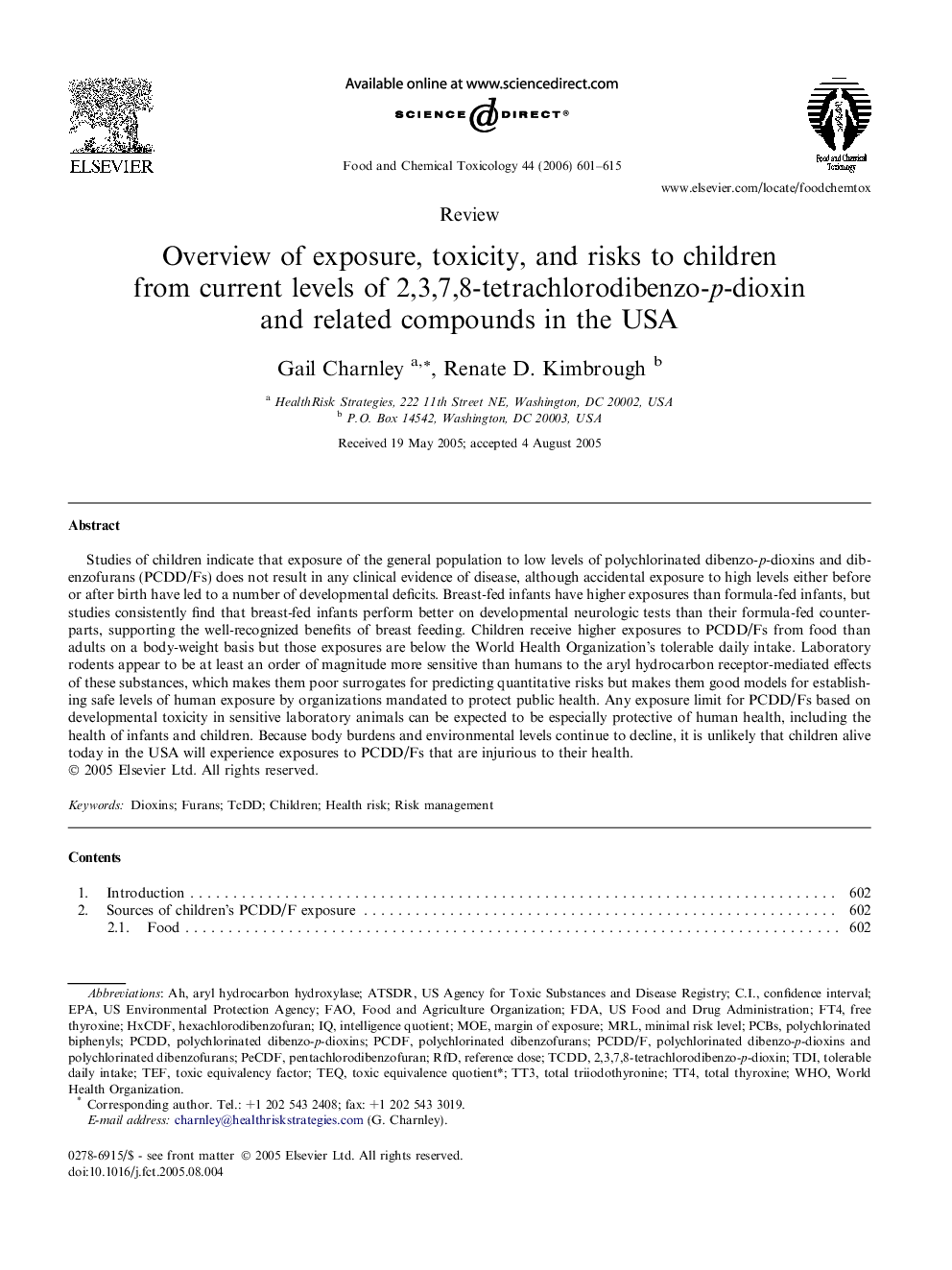| Article ID | Journal | Published Year | Pages | File Type |
|---|---|---|---|---|
| 2588127 | Food and Chemical Toxicology | 2006 | 15 Pages |
Studies of children indicate that exposure of the general population to low levels of polychlorinated dibenzo-p-dioxins and dibenzofurans (PCDD/Fs) does not result in any clinical evidence of disease, although accidental exposure to high levels either before or after birth have led to a number of developmental deficits. Breast-fed infants have higher exposures than formula-fed infants, but studies consistently find that breast-fed infants perform better on developmental neurologic tests than their formula-fed counterparts, supporting the well-recognized benefits of breast feeding. Children receive higher exposures to PCDD/Fs from food than adults on a body-weight basis but those exposures are below the World Health Organization’s tolerable daily intake. Laboratory rodents appear to be at least an order of magnitude more sensitive than humans to the aryl hydrocarbon receptor-mediated effects of these substances, which makes them poor surrogates for predicting quantitative risks but makes them good models for establishing safe levels of human exposure by organizations mandated to protect public health. Any exposure limit for PCDD/Fs based on developmental toxicity in sensitive laboratory animals can be expected to be especially protective of human health, including the health of infants and children. Because body burdens and environmental levels continue to decline, it is unlikely that children alive today in the USA will experience exposures to PCDD/Fs that are injurious to their health.
